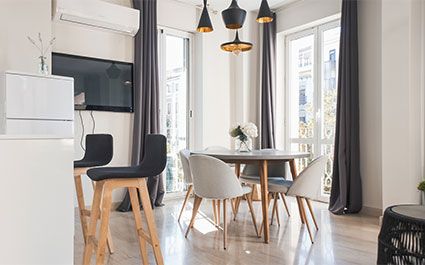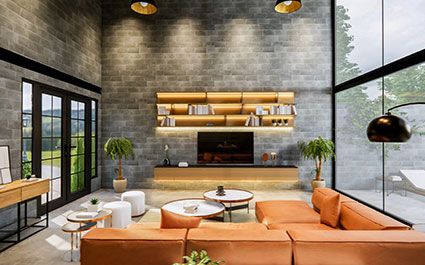
The concept of minimalistic art traces its roots to the 1960s and 1970s when a bunch of artists Donald Judd, Carl Andre, and Dan Flavin focused on simplifying their art through simple shapes and colours and dubbed this trend ‘minimalism’.
This concept quickly spread to the home design industry and artists who believed in the philosophy of ‘less is more’ quickly adapted it. Architects like Richard Meier, Luis Barragan, and John Pawson used this concept extensively. Minimalism in interior design is not just about fewer colours and designs but about giving the home a sleek and stylish look with less noise.

Minimalism has extended its realm beyond art and home decor. It has become a part of the lifestyle and provides great peace of mind, freedom, and fewer worries. This is the core concept of home decor, as a minimalist home will give lesser maintenance worries and, at the same time, give a stylish look.
Minimalism needs a certain clarity, and the approach should follow certain guidelines. Here are some of these guidelines to follow before you embark on your minimal home decorating project.
Start with a piece of furniture or artwork that will stand out. You can add some showpieces and furniture around it. Minimalism doesn’t mean being colourless, and you can use a few shades of colour on the walls and design the space around them. But be clear about what elements you want to highlight.
Having open areas amplifies minimalism and makes your home look spacious. Use elements like lighting and ventilation to give the style, and you can use some light-coloured elements and tiles to give a trendy look. Check out the Click-N-Lock tiles range from Welspun Flooring to get more ideas on minimalistic flooring designs.
The lighting plays a key role in highlighting the mood of your living areas, and you can choose simple chandeliers and mood lighting to convey your style. Ensure you go with sober colours, as flashy lighting can give out the exact opposite vibe.
If your home has a great terrace or balcony view, focus on highlighting that aspect of your home. You can keep the furniture pointing towards the view or use some cool door frames on the door or windows leading to the view. Use some indoor plants and artwork to build a great view inside as well.
Add a bit of contrast to a neutral room decor by introducing an element in a contrasting colour. You can use wallpapers and painting for this purpose. The only rule that you should follow here is not to use an element that takes up a lot of space.
You can use a variety of materials for texture in minimalist home interior designs, such as timber, glass, pottery, cloth, and canvas. Minimalism doesn’t have to be boring, and there is a lot of experimentation that can be done in this style.
Minimalism is about highlighting the elements that you want others to see. It’s not about cost-cutting and frugality. You can go for cool artwork or designer storage units or fireplaces to energise the room and give it a relaxing feel. Use less space and do more; this is what minimalist design is all about.